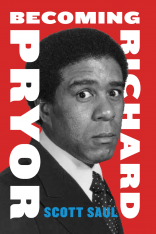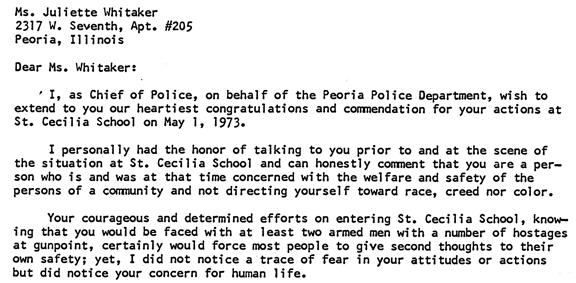Juliette Whittaker was commended by Robert Latham, Peoria’s Chief of Police, for her “courageous and determined efforts” during a hostage situation at St. Cecilia School in 1973.
Latham thanked Whittaker for walking into a setting where she would be facing “at least two armed men with a number of hostages at gunpoint” without any noticeable fear, only a visible “concern for human life.”
One wonders what Juliette Whittaker, who cared deeply about the plight of black people, would have made of the language of the commendation — that she was concerned only with the “welfare and safety of the persons of a community and not directing [herself] toward race, creed nor color.” Here Latham was channeling the language of “colorblindness” — as when, later in the letter, he wished for a day in which “each of us are human beings not to be defined by our race, creed or color.” Yet in her art and in her life, Whittaker often did not operate according to this either-or logic: she was both a proudly black artist and a citizen of the world.

